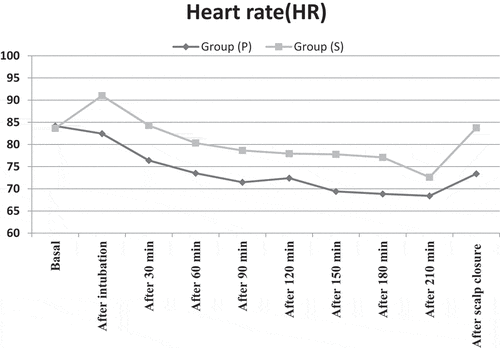Figures & data
Figure 1. Consort flow diagram

Table 1. Patients characteristics
Table 2. Peripheral oxygen saturation (SpO2), mean arterial blood pressure, end tidal carbon dioxide
Figure 2. Heart rate

Figure 3. Central venous pressure (CVP)

Table 3. Jugular Oxygen saturation and the arterio-jugular oxygen content difference
Table 4. Cerebral blood flow equivalent (CBFe) & Serum Lactate (mg/DL)
Table 5. Cerebral extraction ratio of oxygen (CEO2) & Estimated cerebral metabolic rate for oxygen (eCMRO2) [ml/100 g/min]
Table 6. Surgical information and ICU stay time
